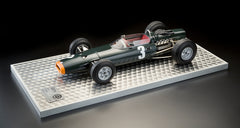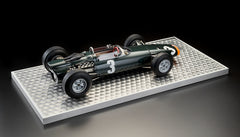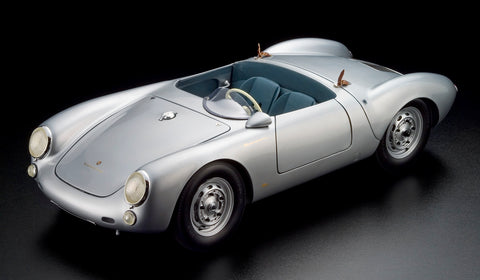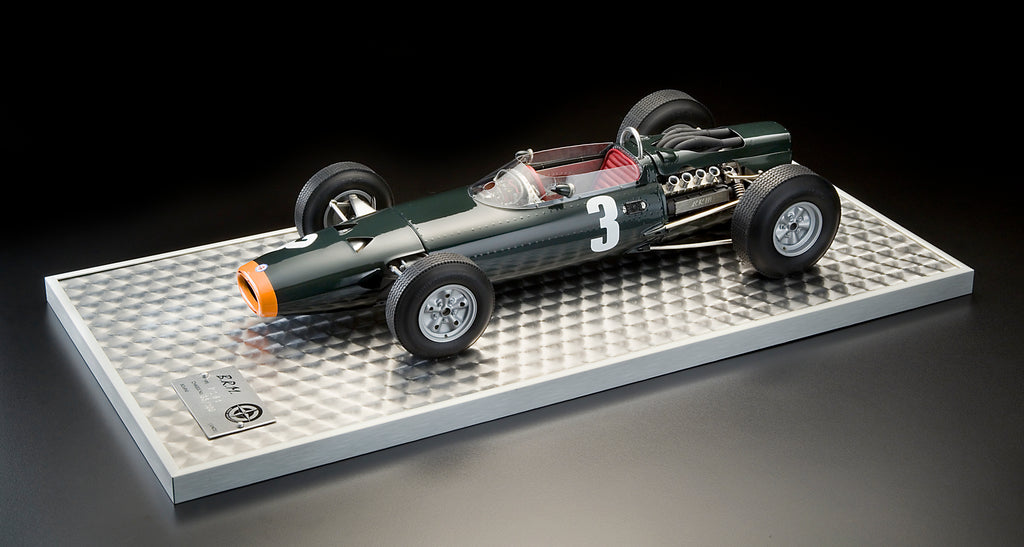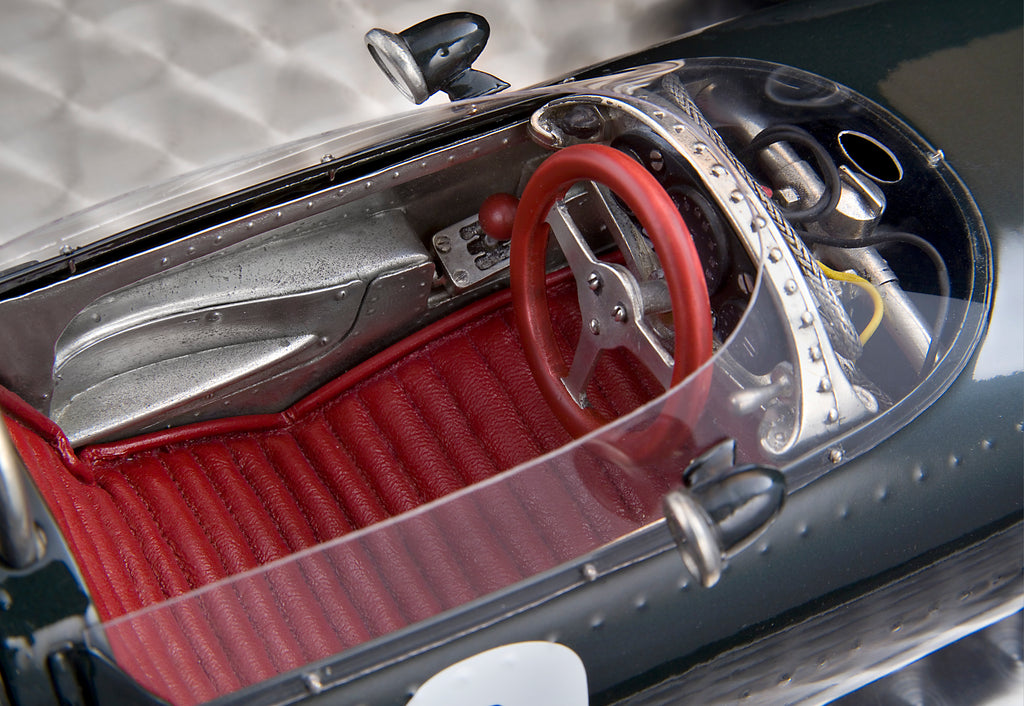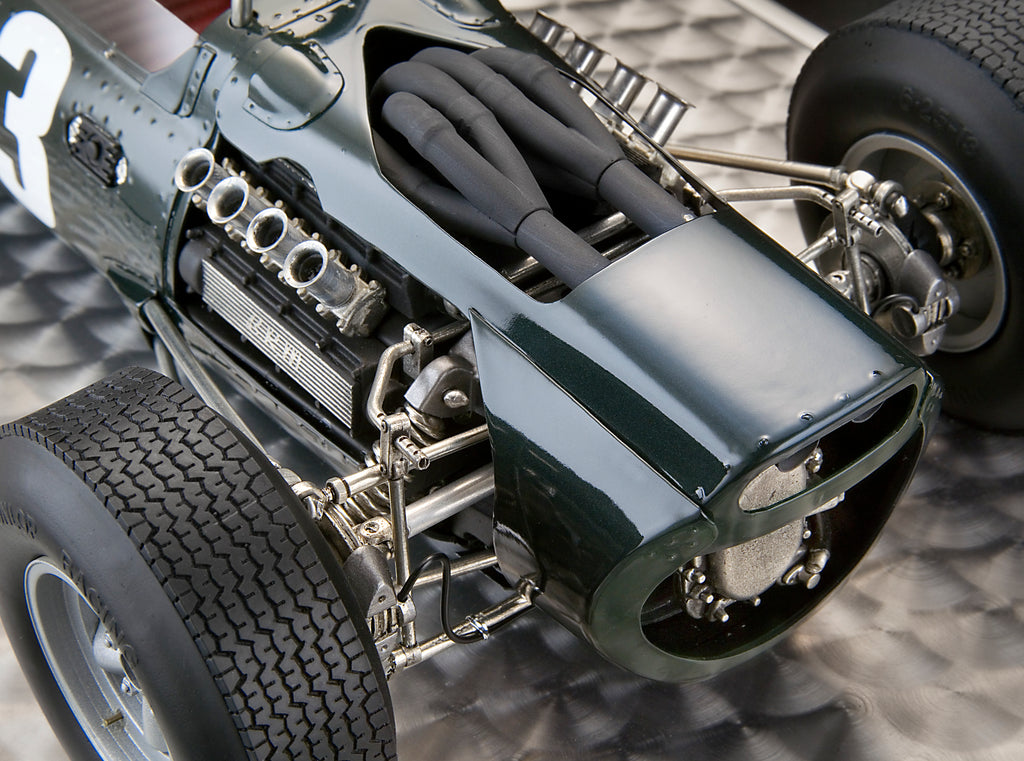BRM P261 1965 Monaco Winner Graham Hill Monoposto Collection 1:8 Scale
$2,900.00
In today's world of Formula One, dominated by marques like Mercedes, Williams, Ferrari, McLaren, etc., for many race fans, the name 'BRM' has nearly disappeared from memory. Not so in the late 1950's and '60's. BRM, or British Racing Motors, grew to prominence and eventual domination of grand prix racing.
Founded in 1945, its influence began to be felt from 1951 onwards, largely due to a small team of innovative designers and engineers. This group had always pushed the limits of conventional thought, exemplified by their remarkable V16 engine, built in 1951, providing a staggering (for the time) 600 bhp. Reliability issues plagued the engine, and displacement rule changes effectively killed further development.
Fast forward to 1964, when BRM with a decade of F-1 experience under its belt debuted its P261 car, heavily influenced by Colin Chapman's benchmark Lotus 25. It was powered by a 1.5 liter normally aspirated V8 rear mounted engine delivering around 210 bhp. Interestingly, the position of the inlet and exhaust manifolds were reversed to allow dense, cool air into the engine with the exhausts bundled into a compact mass atop the motor. This enhanced aerodynamics, but built up heat within the bodywork, which eventually was cut away to allow cooling.
The P261 announced its presence at the 1964 Grand Prix of Monaco, where it astonishingly won. This was followed by several podium finishes that year, allowing Graham Hill to come within one point of World Champion John Surtees overall. The P261 proved itself a viable contender carrying on for another two years of Formula One racing, including another Monaco Grand Prix win in 1965 with Hill aboard.
Our Monoposto Collection P261 in 1:8 scale presents itself very well, and could certainly be the standout model in any serious collection. It is Hill's 1965 Monaco winning car, race number three, coincidentally his third win at Monaco. The size of the model immediately commands attention, while the plethora of fine detail is impressive. Of particular interest is the engine/rear suspension, where components are metal-formed and highly realistic. While spartan, the cockpit is nicely represented with visible instrument wiring and simulated panel riveting. The front suspension members are beautifully cast and the front and rear tires are the correct different sizes. The wheels feature tiny valve stems with the front wheels cast in a different configuration from the rears.
The P261 is secured to a classic Monoposto Collection engine-turned aluminum base with accompanying BRM number plate that identifies this model as being number 35 in an edition of 100. An etched BRM perspex cover keeps the model dust-free. The model itself measures 17 inches with the base at 24 inches.



